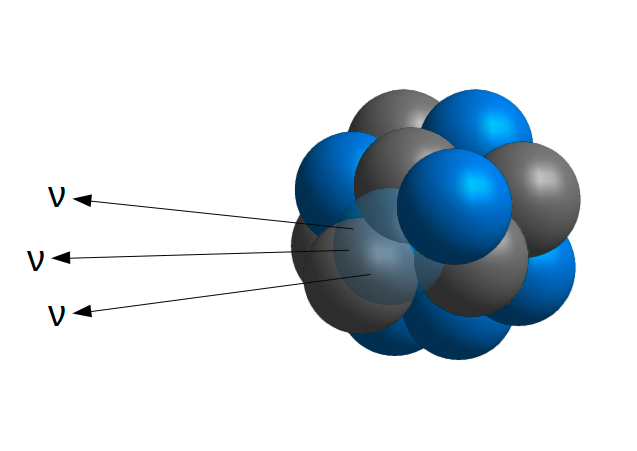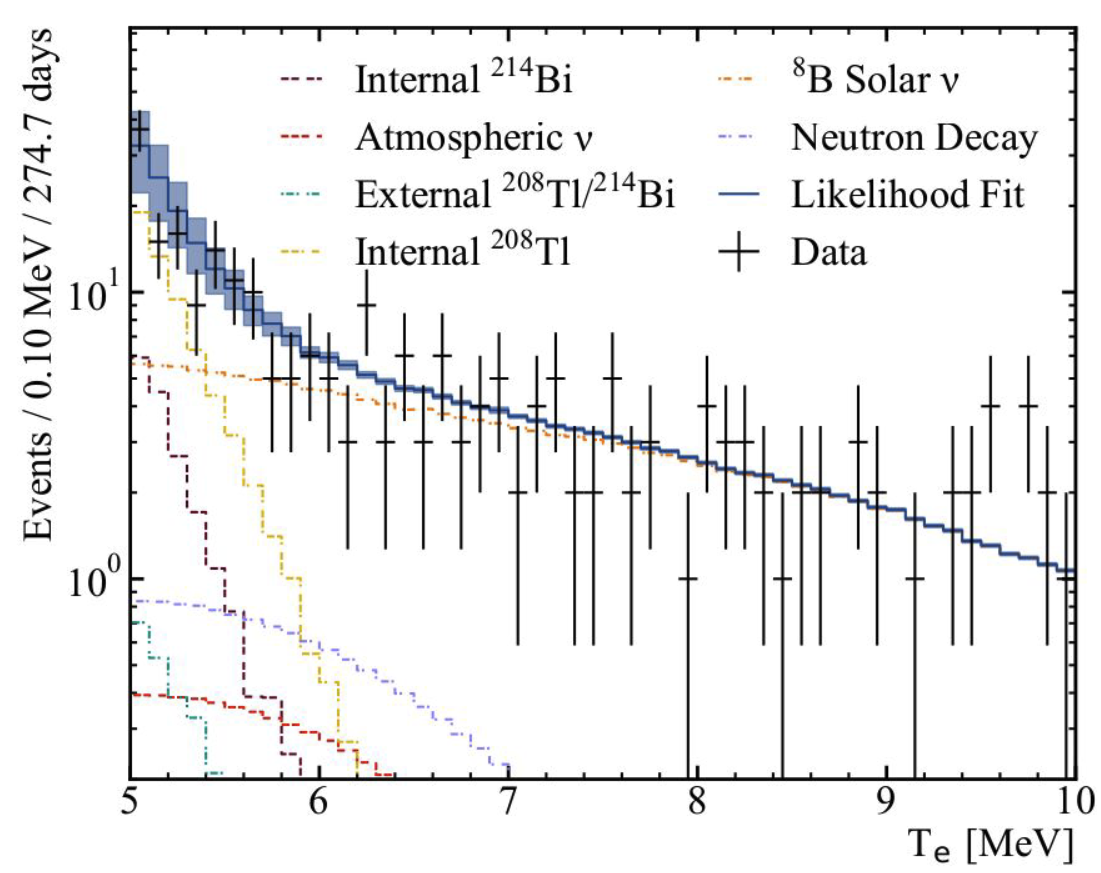Science Programme
The SNO+ Experiment is used to investigate a large suite of physics phenomena.
Find out more about our current active research interests here.
Invisible Nucleon Decay

The Standard Model of particle physics stipulates that free protons are stable, and that free neutrons can only decay through the weak interaction to produce protons, electrons, and anti-neutrinos. If either nucleon were found to decay through alternative means, then this would provide direct evidence for physics beyond the Standard Model, and possibly giving insight to the sort of physics driving the decay. Most models which extend the Standard Model predict that protons would actually decay in free space, though with a very long lifetime (much longer than the lifetime of the universe). The only feasible way to look for such a rare event is to build very large detectors (with many protons). Experiments such as Super-Kamiokande are specifically designed to be sensitive to commonly predicted decay modes, such as p→eπ and p→νK, which have a large deposited energy within the detector. Alternative theories, such as those which unify the Standard Model interactions through extra dimensions, expressly forbid these modes, instead giving rise to so-called "invisible decay channels".
To look for invisible modes of decay, the SNO+ experiment must detect the resulting nuclear deexcitation that comes from the decay process in the oxygen nucleus. Muons produced by cosmic rays can penetrate into the detector and produce a similar signal, which gives SNO+ an advantage compared with other detectors due to its extraordinary depth. Currently, the SNO+ Experiment holds world-leading limits nearly all forms of mono- and di-nucleon invisible nucleon decay modes. The projection of the reconstructed energy spectrum of the data used for this analysis is shown here:
